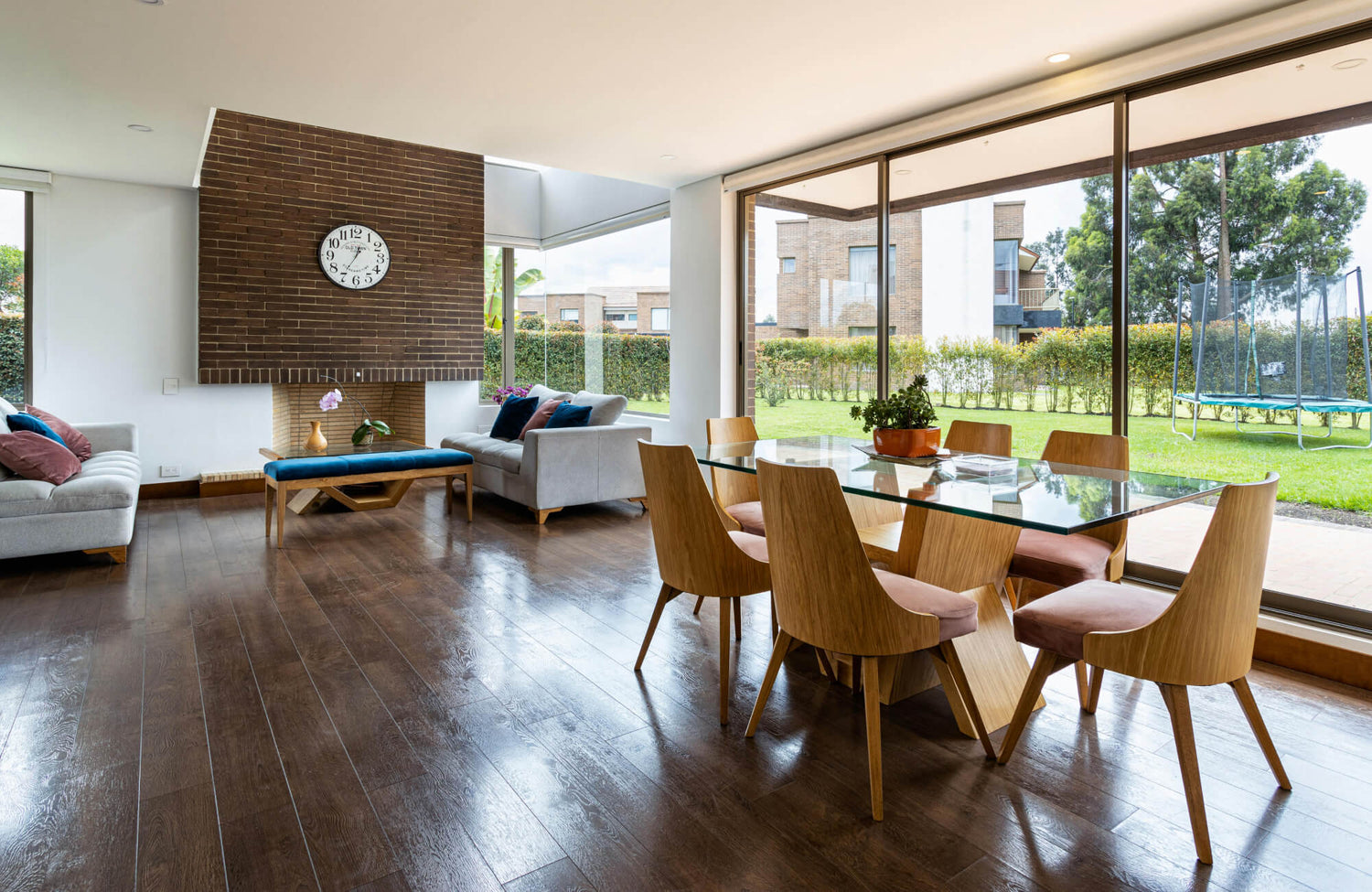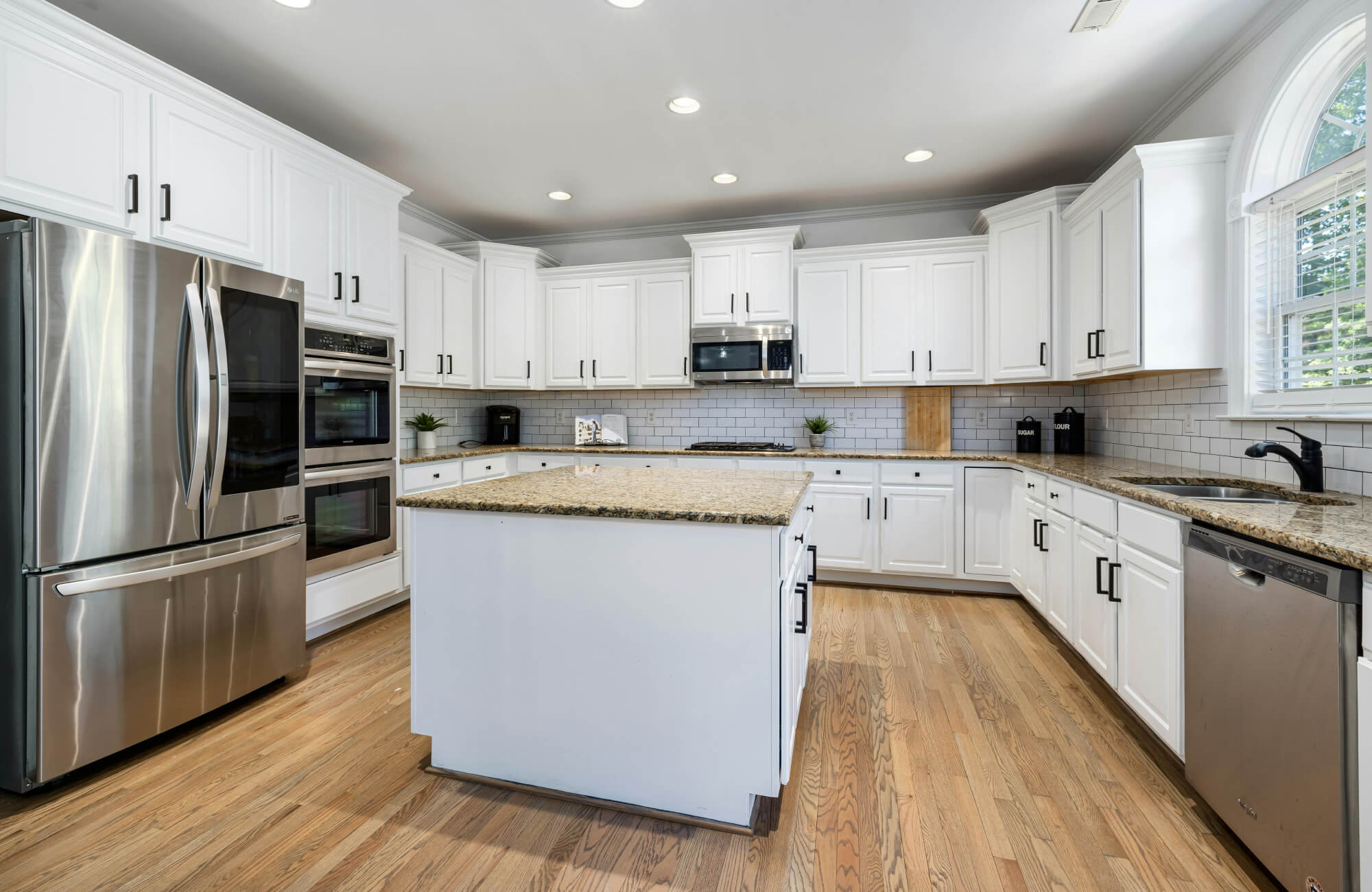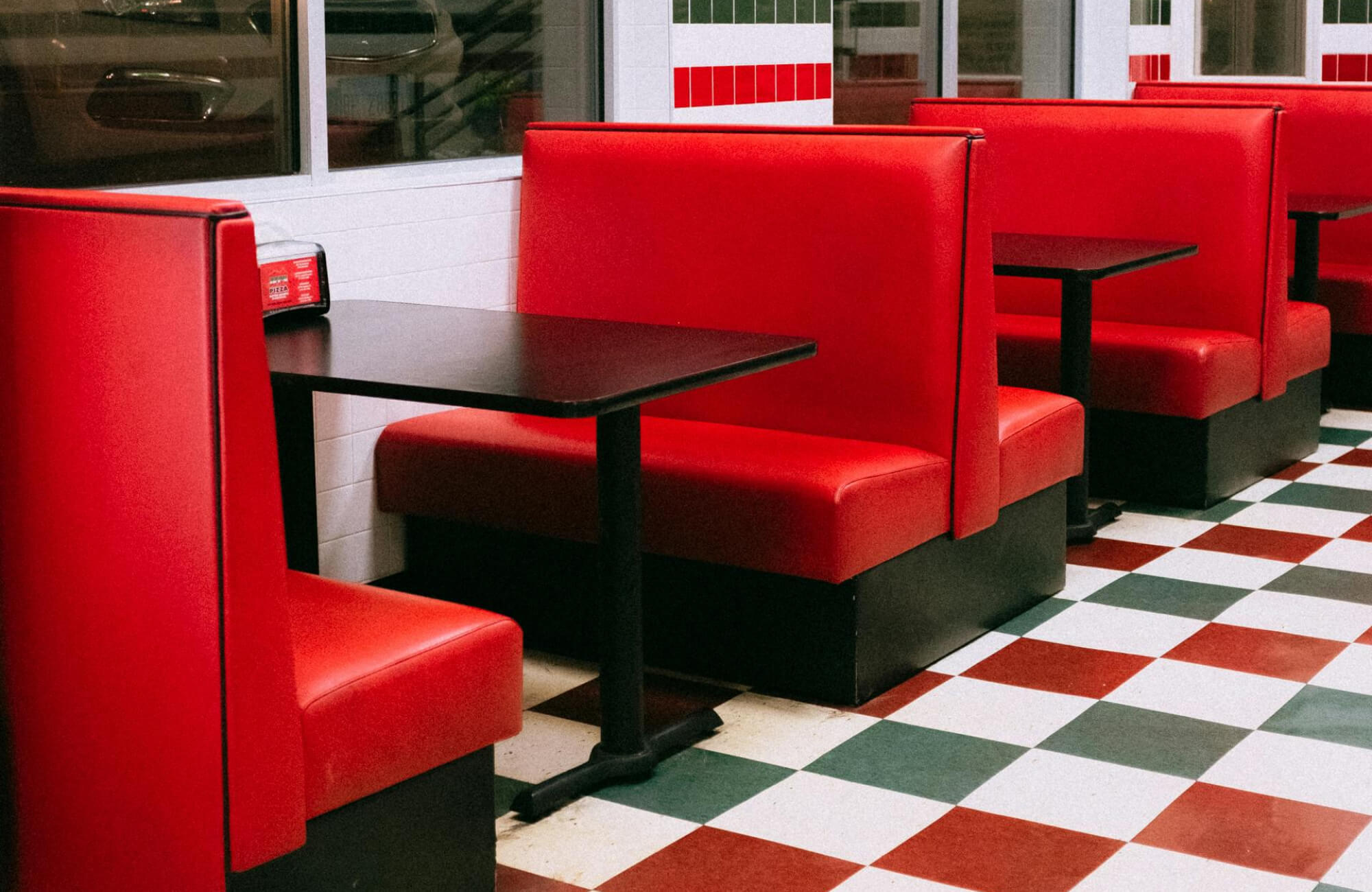Wood flooring, with its timeless elegance and natural warmth, has been a popular choice for homeowners for centuries. Its durability and beauty make it a worthwhile investment, with well-maintained hardwood floors lasting anywhere from 50 to 100 years on average. Several factors, including the type of wood, installation quality, and maintenance practices, significantly influence their lifespan. In this comprehensive guide, we'll explore these factors and provide insights into maximizing the longevity of your wood floors.

The Role of Wood Species in Longevity
The hardness and durability of the wood species directly influence its lifespan. Hardwoods are highly durable, capable of withstanding heavy use and lasting for decades with proper care. In contrast, softwoods like pine and fir are better suited for spaces with lighter activity due to their susceptibility to scratches and dents, requiring more frequent refinishing.
The overall quality of the wood is another critical factor. Well-seasoned, high-quality wood with optimal moisture content and minimal defects is far less likely to warp, crack, or degrade over time, ensuring greater longevity. To help you make an informed decision, here are some popular wood species and their typical lifespans:
Oak
Oak is a classic choice for hardwood flooring, valued for its strength, durability, and beautiful grain patterns. With proper care, oak floors can last 50 to 100 years, making them a long-lasting investment for your home.
Maple
Known for its hardness and resistance to dents, maple offers a smooth, uniform appearance. Its durability makes it ideal for busy areas, and maple floors can typically last between 30 to 50 years with proper care.
Walnut
Walnut is a luxurious hardwood that features rich, dark tones and distinctive grain patterns. Although it may be more prone to scratches, walnut floors can last 40 to 60 years, depending on maintenance and usage, and are a popular choice for their elegance.
Hickory
One of the hardest and most durable wood species, hickory is ideal for frequently used areas. Its resistance to dents and scratches, combined with its unique grain, makes hickory floors highly durable, with a lifespan of 50 to 70 years when properly maintained.

The Impact of Installation Quality
Proper installation techniques, coupled with meticulous attention to detail, can significantly extend the life of your floors. Conversely, poor installation practices can lead to a host of problems, including squeaking, buckling, and premature wear and tear.
Common Installation Mistakes and Their Consequences
Improper installation can undermine the durability and aesthetic appeal of your wood flooring. Here are some common mistakes:
Improper Acclimation
Wood flooring expands and contracts with changes in humidity and temperature. If the wood is not allowed to acclimate to the room's environment before installation, it may shrink or expand, leading to gaps, buckling, or cupping.
Poor Subfloor Preparation
A stable and level subfloor is essential for the long-term performance of wood flooring. Uneven or weak subfloors can cause the flooring to sag, squeak, or develop other issues.
Incorrect Fastening
Improper nailing or stapling can lead to loose boards, squeaking, and potential damage to the flooring. The fasteners must be driven to the correct depth to ensure a secure and stable installation.
Best Practices for Long-Lasting Installation
Achieving a durable, long-lasting wood floor begins with careful installation:
Choose a Qualified Installer
Selecting a skilled and experienced installer is crucial to ensure proper wood flooring installation. A reputable professional brings the expertise needed to secure the flooring correctly and create a level surface, which helps prevent common issues such as buckling, gaps, or squeaking.
Proper Acclimation
Allow the wood flooring to acclimate to the room's environment for several days before installation. This will help prevent issues related to moisture content and dimensional changes.
Prepare the Subfloor
Ensure that the subfloor is clean, dry, and level. Any unevenness or damage should be repaired before installation.
Use High-Quality Materials
Invest in high-quality wood flooring and installation materials to ensure a durable and long-lasting floor.
Inspect the Installation
Carefully inspect the completed installation to verify that the boards are securely fastened, the gaps are consistent, and the overall appearance is satisfactory.

The Power of Proper Maintenance
Proper maintenance is also crucial to preserving the beauty and longevity of wood flooring. By incorporating a consistent cleaning and care routine, you can significantly extend the lifespan of your floors and reduce the need for costly repairs.
Essential Maintenance Tasks
To keep your wood floors in top condition, regular cleaning and maintenance are key. Routine tasks, such as sweeping or vacuuming, help prevent the buildup of dirt, dust, and debris that can scratch the wood surface. For deeper cleaning, use a damp mop, but be careful not to overwet the floor, as excessive moisture can cause damage.
Polishing your wood floors also periodically helps restore their shine while offering additional protection against wear. A high-quality wood floor polish can fill in minor scratches and create a barrier to prevent further damage. However, as the finish naturally wears down over time, refinishing becomes necessary to protect the wood and restore its beauty.
Refinishing involves sanding the surface to remove the old finish, followed by applying a fresh coat of polyurethane or another protective sealant. This process not only revitalizes the floor’s appearance but also enhances its durability. To ensure this is done correctly, professional refinishing is recommended, and its frequency depends on factors such as the type of wood, the level of use, and the severity of wear.
Avoiding Common Maintenance Mistakes
One of the most common mistakes is exposing the wood to excessive moisture. As a hygroscopic material, wood absorbs and releases moisture from the air, and too much water can cause warping and cupping. To avoid this, limit the use of water when cleaning and address spills immediately. Another frequent error is using harsh cleaning chemicals, which can strip the finish and damage the wood. Always opt for mild, pH-neutral cleaners designed specifically for wood floors to preserve their protective coating. Finally, neglecting regular maintenance can lead to the buildup of dirt and grime, which accelerates wear and tear. Keeping a consistent cleaning routine is crucial for maintaining the wood’s appearance and durability.

Addressing Common Issues and Their Impact on Lifespan
While wood flooring offers timeless beauty and durability, it's susceptible to certain issues that can affect its lifespan. Understanding these common problems and implementing preventive measures can help maintain the longevity and aesthetic appeal of your wooden floors.
Water Damage
Water damage poses a significant threat to wood floors, as even minor spills can lead to issues like warping, cupping, and mold growth. To prevent this, clean up spills promptly to prevent water from seeping into the wood. Maintaining low indoor humidity levels with dehumidifiers can also help reduce moisture-related problems, and regular plumbing inspections can identify and address potential leaks before they cause damage. In areas prone to moisture, such as kitchens and bathrooms, consider installing water-resistant flooring options like tile or luxury vinyl to further safeguard against water damage.
Scratches and Dents
Scratches and dents can detract from the appearance of wood flooring over time, but you can minimize the risk of damage by taking a few precautions. For instance, use furniture pads under furniture legs to prevent scratches, and always lift heavy objects instead of dragging them across the floor. Regularly vacuuming and sweeping will also help remove dirt and debris that can cause scratches, while placing doormats at entrances can trap dirt and moisture before it reaches the floor. Additionally, periodic professional refinishing can restore the wood's original appearance and provide an extra layer of protection against future damage.
Fading and Discoloration
Exposure to sunlight and UV rays can cause wood flooring to fade and discolor over time. To preserve their vibrancy, install window treatments like curtains or blinds to filter sunlight and reduce UV exposure. Regular cleaning will also help remove dirt and grime that can accelerate fading, while using mild, pH-neutral cleaners prevents damage to the wood’s finish. Additionally, periodically applying a protective finish, such as polyurethane, shields the wood from UV rays and moisture, extending the life and appearance of your floors.

Cost vs. Lifespan
When selecting wood flooring, it's essential to consider not only the initial cost but also the long-term expenses associated with maintenance and potential replacements. A comprehensive cost-benefit analysis can help you make an informed decision that aligns with your budget and lifestyle.
Initial Costs
The initial cost of wood flooring varies significantly depending on several factors, including the type of wood, the complexity of the installation, and regional market prices. Exotic hardwood species, such as Brazilian cherry or mahogany, tend to be more expensive than domestic options like oak or maple. Additionally, intricate installation techniques, such as herringbone or chevron patterns, can increase labor costs.
Maintenance Costs
As previously highlighted, wood flooring requires regular maintenance to preserve its appearance and longevity. Routine cleaning, polishing, and occasional refinishing are essential to keep your floors looking their best. The frequency of these maintenance tasks depends on factors such as level of activity, the type of finish, and environmental conditions.
Regular cleaning with a soft broom or vacuum cleaner can help remove dirt and debris. Periodically, you may need to mop the floor with a wood-safe cleaner that will cost approximately $10-$20 per bottle to remove any buildup. Polishing, which restores shine and protects the finish, is typically needed every 1-2 years and may cost $50-$100 for DIY materials or $200-$400 if performed professionally. Refinishing, a more intensive process that involves sanding and reapplying the finish, is necessary every 5-10 years. Professional refinishing typically costs $3-$8 per square foot, depending on the size of the area and the complexity of the project. By budgeting for these regular maintenance expenses, homeowners can ensure their wood floors remain an elegant and long-lasting feature in their homes.
Long-Term Value
Despite the initial costs and the effort required for proper maintenance, wood flooring delivers exceptional long-term value. Its timeless beauty and ability to complement various interior design styles mean it will never go out of fashion, allowing you to enjoy its benefits for decades.
Beyond aesthetics, well-maintained wood floors can also significantly boost your home's resale value, as prospective buyers often view wood flooring as a desirable feature due to its durability, easy maintenance, and luxurious appeal. In many cases, homes with quality wood flooring can command higher offers in competitive real estate markets.
Additionally, wood flooring is highly sustainable when sourced responsibly, adding an eco-friendly dimension to its value. Unlike other flooring materials that may need frequent replacements, wood flooring can be refinished multiple times, restoring its original beauty and extending its lifespan. Over time, this reduces the need for replacements, making it a cost-effective and environmentally conscious investment.
Stylish and Durable Alternatives Beyond Wood
While wood flooring remains a popular choice, a variety of stylish and durable alternatives can offer unique benefits, catering to different needs, preferences, and budgets. These options not only enhance the aesthetic appeal of any space but also provide added functionality, such as better water resistance, durability, and ease of maintenance. Whether you’re looking for a budget-friendly, long-lasting solution or something with the natural look of wood, the following alternatives offer a range of benefits.
Luxury Vinyl Tile (LVT) and Luxury Vinyl Plank (LVP)
Luxury Vinyl Tile (LVT) and Luxury Vinyl Plank (LVP) are popular alternatives due to their versatility, durability, and water resistance. These flooring options are available in a wide variety of styles, including wood-look finishes that replicate the appearance of real hardwood. One of the primary advantages of LVT and LVP is their resilience to scratches, dents, and moisture, making them ideal for busy areas, homes with pets or children, and spaces prone to humidity like kitchens and bathrooms. With proper care, which includes regular cleaning with mild detergent and a mop, they can last between 15 to 25 years, offering a long-lasting and low-maintenance solution for modern interiors.
While LVT and LVP offer excellent durability, they may lack the authentic feel and texture of natural wood, which can be a deciding factor for some homeowners. Additionally, these flooring options are prone to fading when exposed to prolonged direct sunlight, and they are less environmentally friendly compared to natural materials due to their synthetic composition. Repairs can also be challenging, as damaged planks or tiles often need to be replaced entirely, rather than repaired.
Laminate Flooring
Laminate flooring is an affordable and durable alternative that mimics the look of wood while providing resistance to scratches, dents, and fading. Made from several layers, laminate flooring consists of a wear layer, decorative layer, and core, ensuring strength and durability. However, it is susceptible to water damage, so it is important to avoid spills and excessive moisture. While laminate may not offer the same natural wood appearance as solid hardwood, it still provides a visually appealing, cost-effective solution for many spaces. Laminate flooring also typically lasts 15 to 25 years, although individual planks may need replacing if damaged.
Engineered Wood Flooring
Engineered wood flooring is an excellent choice for homeowners who love the look of real wood but want added durability. Composed of several layers of wood with a top layer of genuine wood veneer, engineered wood offers greater stability than solid hardwood, making it less susceptible to warping and cracking. This makes it a great option for various climates, as it is less affected by changes in humidity. While more expensive than laminate, engineered wood offers the beauty of hardwood with less maintenance, such as periodic refinishing. It can last between 20 to 30 years, depending on the quality of the materials and the installation.
Cork Flooring
Cork flooring is a sustainable and eco-friendly option that offers unique benefits. Made from the bark of cork oak trees, it is naturally sound-absorbing, shock-absorbing, and hypoallergenic, making it a great choice for homes with children, pets, or allergy sufferers. Cork also provides excellent thermal insulation, helping to regulate room temperature and reduce energy costs. With proper care, including avoiding excessive moisture and regular cleaning with mild detergent, cork flooring can last 20 to 30 years. Its combination of comfort, sustainability, and functionality makes it a standout choice for many homeowners.
Tile Flooring
Wood look tile flooring is a durable and stylish alternative to wood, offering a variety of porcelain options. This material is known for its strength, moisture resistance, and ease of maintenance, perfect for busy and moisture-prone areas like kitchens, bathrooms, and entryways. They are also denser and more water-resistant, making them suitable for both indoor and outdoor use.
With proper care, wood look tiles can last 50 to 100 years or more, making it a long-lasting flooring option. Unlike natural wood, these tiles do not require sealing, as their inherent properties provide excellent resistance to moisture and stains. Regular cleaning is usually all that's needed to maintain their appearance and durability, making them a low-maintenance alternative to wood flooring that still offers a sophisticated look and functionality.
Carpet
Carpet remains a popular choice for creating warmth and comfort in spaces like bedrooms and living rooms. It is effective at reducing noise and providing a soft, cushioned feel underfoot, which is especially appreciated in homes with children or pets. However, carpets can be more challenging to clean and may trap dust, allergens, and pet dander. To maintain its appearance and hygiene, it is essential to choose high-quality, stain-resistant carpet and commit to regular cleaning. While carpet typically lasts between 5 to 15 years, its lifespan depends on factors such as high-use levels and maintenance. Despite the extra care it requires, carpet offers unmatched comfort and soundproofing for indoor spaces.








